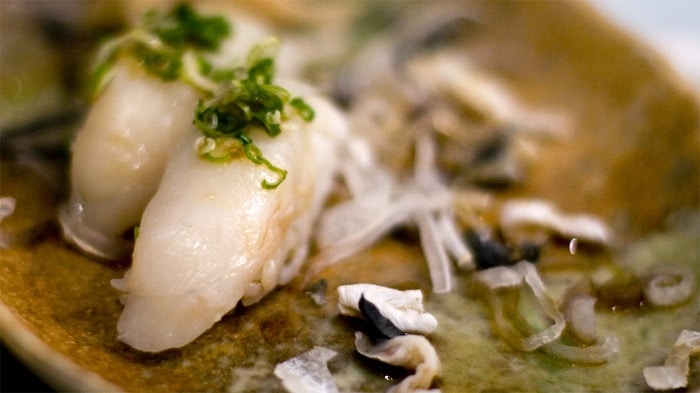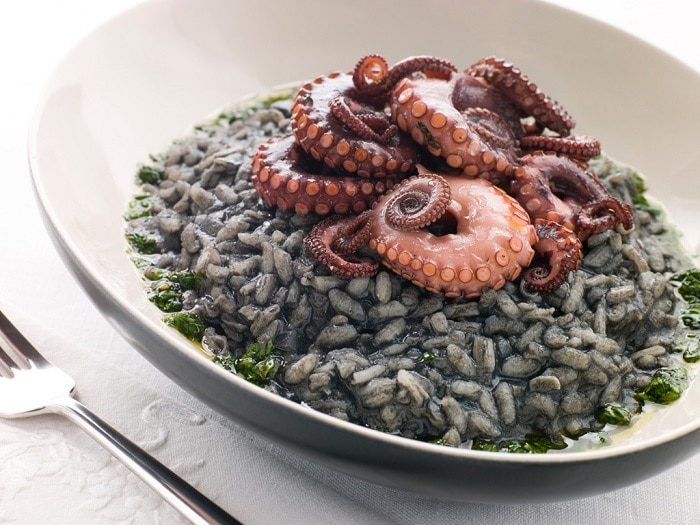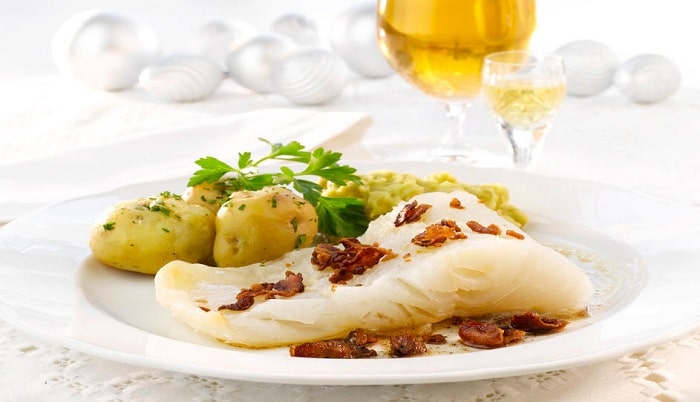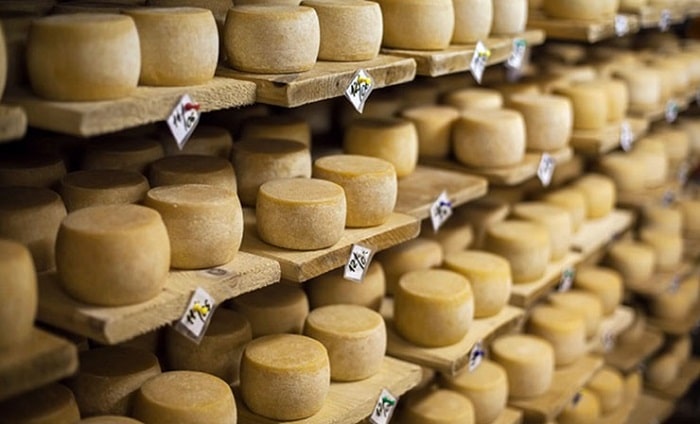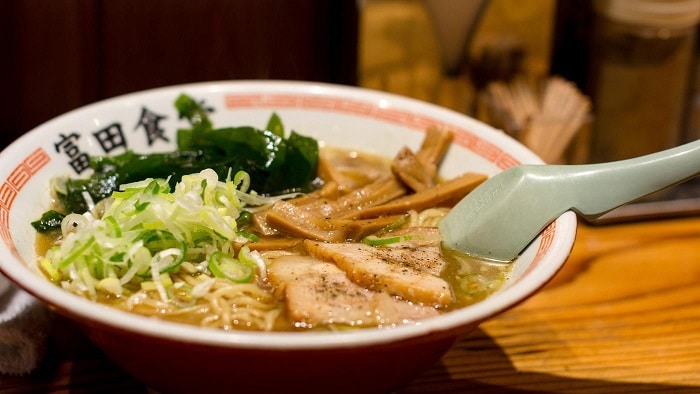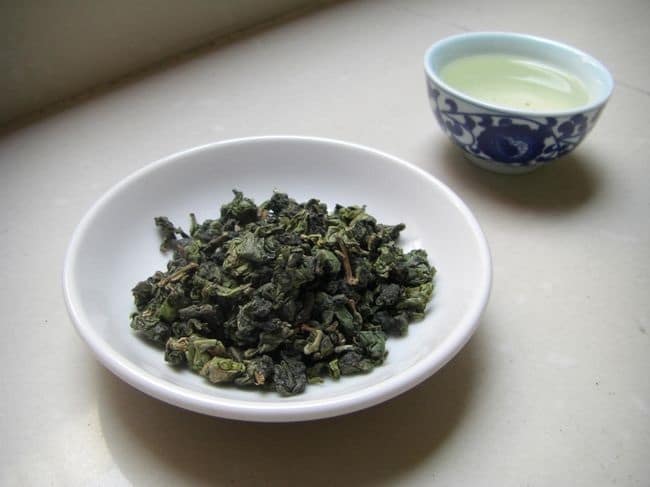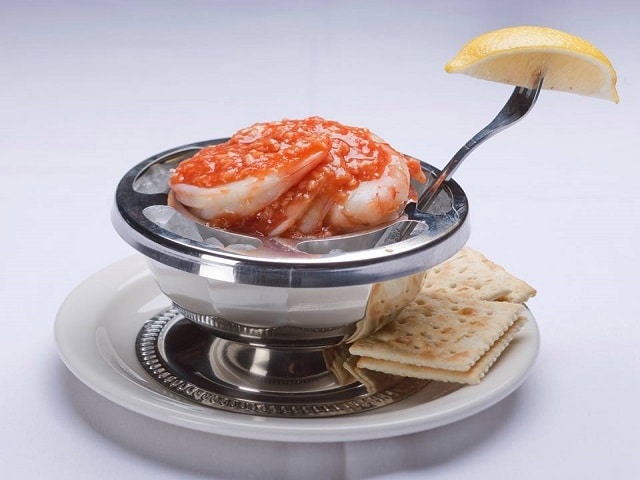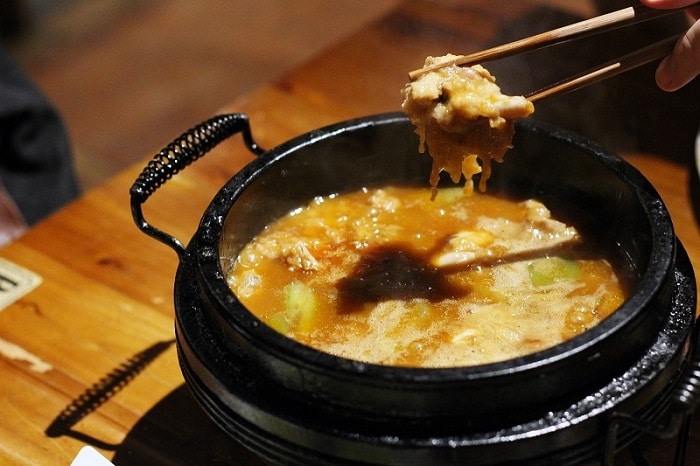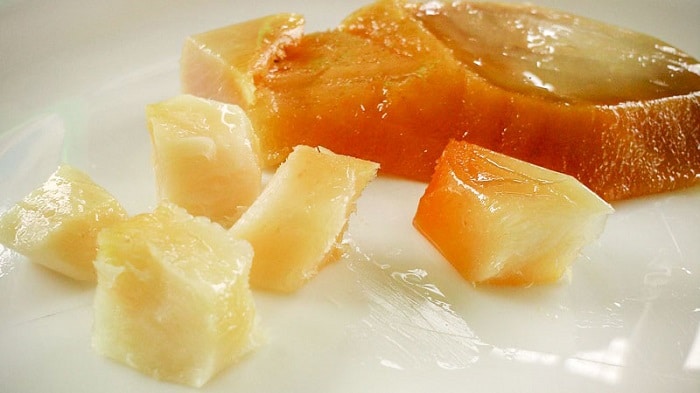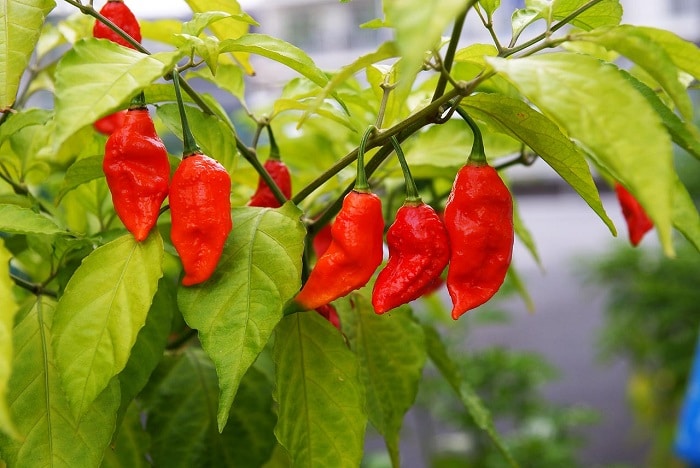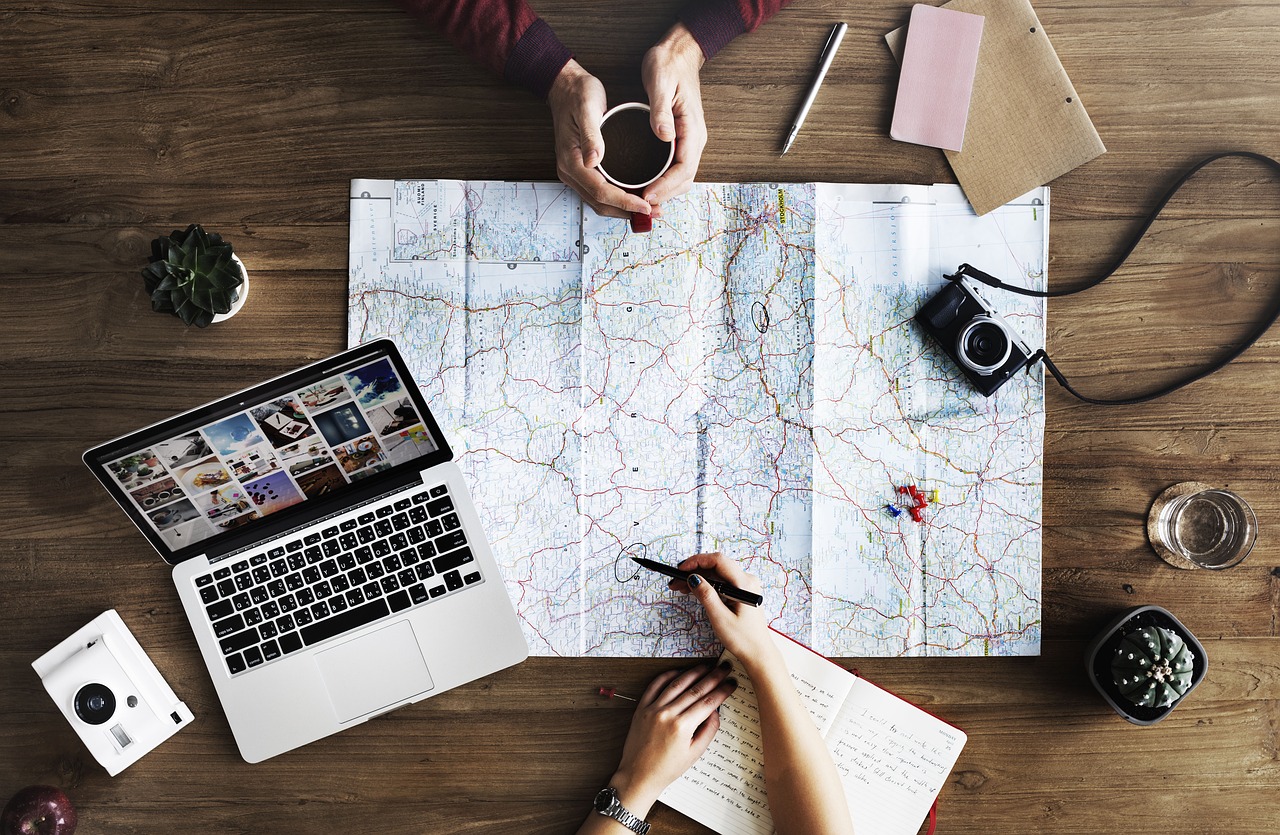Not all food was created equal. Some is more delicious, while some is more deadly. If you take pride in trying all sorts of adventurous foods, we have just the thing for you. It’s customary to taste the local cuisine when traveling abroad, but sometimes it’s better to stick to what you know. As tempting as some mysterious delicacies can appear, they can make you seriously ill or kill you. The dangerous local foods on our list below require special attention and sometimes protective equipment before you can eat them – while some are even illegal. While you can definitely eat these, you probably shouldn’t. Don’t say we didn’t warn you!
1. Fugu Puffer Fish
Blowfish, or Fugu, is one of the most expensive Japanese delicacies. Normally eaten raw, the fish can only be served by master chefs who have extensive experience in preparing it. If you eat properly prepared blowfish, you shouldn’t encounter any problems. However, when the fish is improperly cut, the lethal poison is released, and you’re likely to die. The danger comes from the tetrodoxin in Fugu, which causes your muscles to freeze up, and your throat to tighten up until you suffocate.
The blowfish releases the poison only when cut the wrong way. Tetrodoxin is 1,200 more toxic than cyanide, which represents quite an exciting risk for daring foodies. When ingested, the toxin remains completely under the radar until your central nervous system starts to shut down. Cue paralysis and asphyxiation. Oh, and there’s no antidote for the poison. However, the enhanced risk hasn’t stopped the Japanese from enjoying Fugu. They still consume about 10,000 tons of the fish annually.
2. Sannakji
Octopi are some of the most fascinating creatures swimming our seas and oceans. Not only are they super intelligent, but their brain and nervous system are completely different from ours. Their tentacles are even capable of moving independently from the body after being chopped off. So you should probably be careful if you’re trying sannakji in South Korea. This live dish is made of a small dismembered octopus drizzled with sesame oil or soy sauce. The octopus legs are typically still alive by the time they’re eaten, so they can still move on your plate.
Shockingly, several diners have had trouble with their food trying to choke them. The suckers on the tentacles can also get caught in one’s throat, causing asphyxiation. On average, six people die every year in South Korea killed by octopus tentacles in sannakji. Be warned, there are some recorded cases of tentacles crawling internally into the nasal cavity.
3. Lutefisk
Should you ever travel to Scandinavia, you need to know about this one unusual seafood. Lutefisk is a fish saturated in a highly alkaline solution (potassium hydroxide or sodium hydroxide) before serving. The initial soak takes several days, allowing the protein in the fish to react to the alkaline solution. The result is a jelly-like mass that shouldn’t be left to soak for too long. The second soak is in plain water and it takes another week. This is necessary so the dish is safe for eating. If it’s not treated, lutefisk can cause chemical burns. The final product has a pH of up to 12, making it highly caustic. In fact, lutefisk is so alkaline that you have to eat it with special cutlery. Silverware is no good (it will corrode), and residue on cooking pans or plates will erode the items overnight.
4. Casu Marzu
Don’t read about this food if you don’t want to be turned off your food for life. Rotten maggot cheese is a Sardinian tradition and a highly appreciated aphrodisiac. Yes, your eyes are not deceiving you. Made out of sheep milk, this cheese goes through a disgusting process. Laid outside for several days, the cheese is an open feast for flies to lay their eggs inside. Once they hatch into maggots, they start feeding on the cheese, accelerating fermentation. When you eat Casu Marzu, the larvae can survive. If they do, they start squirming through your intestinal walls, causing serious illness. Even though the EU has banned this “delicacy,” there’s plenty of Casu Marzu on the black market. The maggots can jump six inches high out of this strange cheese, so locals wear eye protection to prevent permanent damage to their eyeballs. Yikes!
5. Monkey Brains
Anyone’s who has ever watched ‘Indiana Jones and the Temple of Doom’ is familiar with monkey brains as food. But it’s not just some disgusting scene in a movie; it’s a downright delicacy in some parts of Asia. If you happen to travel to this corner of the world, you can chow down on monkey brains alongside the locals. But eating a primate’s cerebellum is not just nasty; it’s also dangerous. The monkey may have had an illness called Variant Creutzfeldt-Jakob disease and transfer it to you. Similar to Mad Cow disease, this diseases simply turns your brain to goo, and eventually causes death. To keep on the safe side, avoid the brain dish if someone passes it around the table.
6. Urushi Tea
The one illegal item on our list, urushi tea used to be part of Sokushinbutsu, an extreme Japanese tradition practiced by Buddhists. Originally, the ultimate purpose was for the drinker to achieve enlightenment by mummifying himself over the years (all the while being alive). This tea, made from the urushi tree, contains lethal amounts of urushiol, a highly concentrated poison. When ingested, the drink would cause an extremely violent reaction. The body would lose all fluids almost instantly, while the flesh would achieve high toxic levels. When the tea was administered before someone’s death, it ensured there was almost no water left in the body to aid decomposing. At the same time, the remaining tissues would be too poisonous even for maggots. The urushi tea helped mummify the body properly and prevent decay.
7. St. Elmo Steak House’s Shrimp Cocktail
Because plants cannot move to escape danger, they have to develop other defensive mechanisms. Many have the ability to produce chemicals that cause stinging pain and irritation. Although this usually keeps animals away, people seem to actively seek out foods containing dangerous chemicals. Allyl isothiocyanate, also known as mustard oil, is five times more lethal than arsenic (mass-for-mass). Some people build up resistances to small amounts of this toxin in their food, and a small restaurant in Indiana, U.S., wants to help them push their limits. The prawn cocktail in the picture above is the signature dish at St. Elmo Steak House. Its spiciness is given by the 9 g of grated horseradish containing mustard oil. Reviews say eating this dish gives you a sensation similar to being electrocuted.
8. Giant Bullfrogs
Traveling to Namibia, Africa? Don’t indulge in this particular national culinary specialty. The giant bullfrog is dangerous if your dish was made from too young a specimen. The “premature” bullfrogs that haven’t bred yet are poisonous and they can cause kidney failure. Is that a price you’re ready to pay for eating this curious meal? Eating this dish comes with some preventive measures, ensuring you do not consume the poison. The cooking pots must be lined with dry wood, which supposedly negates the poison and prevents a distressed stomach. You won’t die from consuming a premature bullfrog (if you seek medical attention), but you’ll probably be sick for days.
9. Hákarl
Few foreign people want to try the dish described as the “worst tasting food on earth.” However, this smelling shark from Greenland is one of the traditional Icelandic foods. But why do daring foodies seek it out? Hákarl has made our list because it lacks a kidney or a urinary tract. We’re not particularly interested in the biology of our food, but it this case, it matters. Without these two important parts, the shark does not eliminate the waste and toxic substances. They are instead absorbed directly into its skin, making for a risky recipe. Chefs ferment the shark’s meat and dry it for up to six months so the waste is filtered. The result is somewhat safe for human consumption.
10. Naga Jolokia
If you thought mustard oil was the worst, think again. The chillies contain capsaicin, a substance that’s three times more potent than that. The most lethal chemical found in any human food source, it takes less than 4 g of capsaicin to kill an adult human. Tiny amounts of the substance are often a delicacy in some countries. The desired experience is a tingling sensation in the mouth. The Naga Jolokia chilli is a whole ‘nother story, however. A hybrid originating in Northern India, it contains “two hundred times more capsaicin than the hottest commercially available chillies.” The Naga Jolokia chilli can disrupt neural connections, thus causing intense pain. Smelling the air close surrounding these chillies feels like snorting fire, and it can result in permanent anosmia (loss of the sense of smell). Touching it with bare skin causes burns.
